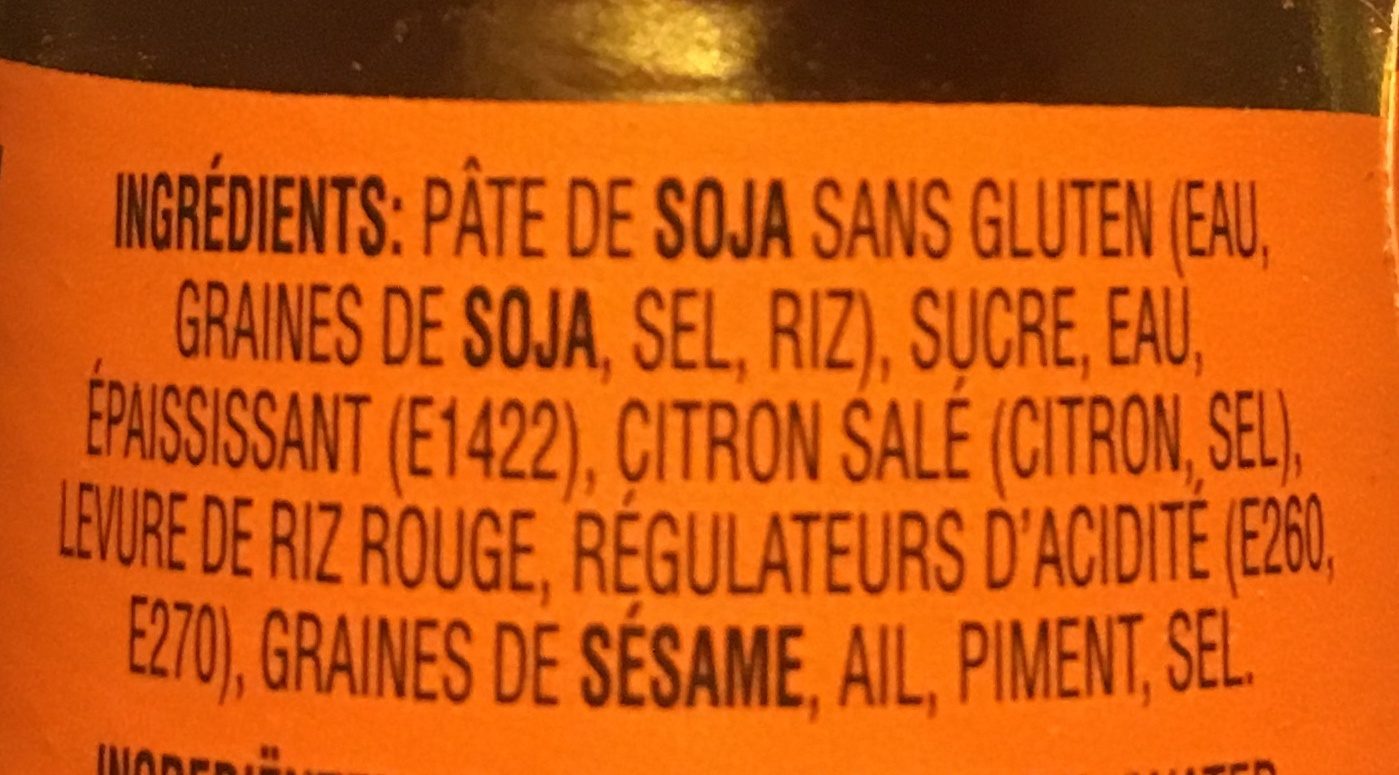Sauce hoi sin - Ayam - 210ml
This product page is not complete. You can help to complete it by editing it and adding more data from the photos we have, or by taking more photos using the app for Android or iPhone/iPad. Thank you!
×
Barcode: 9311627610888 (EAN / EAN-13)
Common name: Sauce Hoi Sin
Quantity: 210ml
Brands: Ayam
Categories: Condiments, Sauces, Epicerie
Labels, certifications, awards:
No gluten, Crossed Grain Trademark, Halal, No GMOs, No preservatives, No flavour enhancer, No MSG, Afdiag
Origin of ingredients: Malaysia
Manufacturing or processing places: Malaisie
Link to the product page on the official site of the producer: http://www.ayam.fr/fr/asian-sauces/507-s...
Stores: Coles, Bilo, Woolworths, Asian Supermarkets, IGA
Countries where sold: Australia, Belgium, France, New Zealand
Matching with your preferences
Environment
Packaging
Transportation
Report a problem
Data sources
Product added on by foodorigins
Last edit of product page on by kiliweb.
Product page also edited by aleene, gaspardfou, guezguez-majed, halal-app-chakib, openfoodfacts-contributors, packbot, quentinbrd, roboto-app, sebleouf, yuka.WVAwUUFyWXVyUGtodC9ZZXJ6elowOTFSd0xLakEyeTVFK1pOSVE9PQ, yuka.sY2b0xO6T85zoF3NwEKvlhYbYevbjRHrMw7nlHKL3vOtdazzbuouuoLDP6s, yuka.sY2b0xO6T85zoF3NwEKvlk11VofQ-2_5ODzfx3-V2NCFJ5_oXoAqwYLjGKo, yuka.sY2b0xO6T85zoF3NwEKvlktiUIferz7mbDLliGLS1NSWE6TpRPJNvabXbqs, yuka.sY2b0xO6T85zoF3NwEKvllVLUYHwjDfVLBntn3On5o2TCK7GXcpCzZmiaao, yuka.sY2b0xO6T85zoF3NwEKvlmtEboPHjhbZPSfRh2aHme-hF67CYeFQz7fbKqs.










